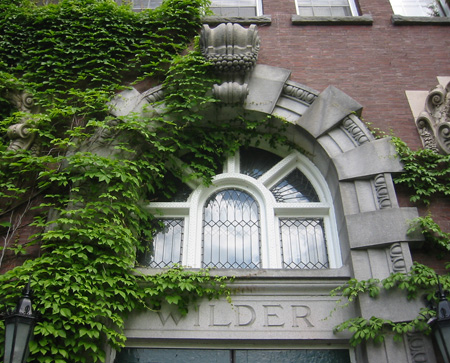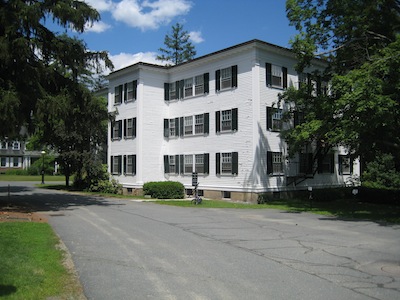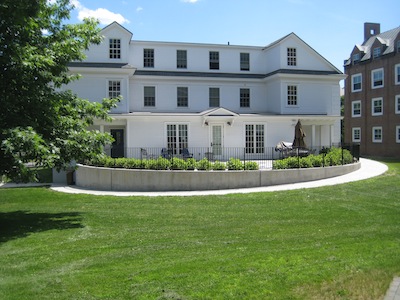- The Advanced Surgery Center addition to the north end of the DHMC complex will open this summer (Thayer School News). A presentation about the ASC reveals that it will have a distinct circulation route for animals.
- Thayer School’s $300 House Project from a while back has been written up in The Guardian:
After the contest, a workshop was held at Dartmouth University where selected designers and architects further sharpened their ideas. Jack Wilson, team leader at Dartmouth, is now preparing to build two pilot projects in Haiti, one rural and the second urban.
- Not related to anything on campus, but an interesting idea encountered while perusing aerial views of Berlin, Germany: K.F. Schinkel’s pioneering 1830s Bauakademie building (Wikipedia), demolished by the East Germans, was recreated as a cloth-covered scaffolding in 2005. It appears in current Bing low-angle aerial views.
- Charlottesville architect William McDonough ’73 (Wikipedia) shares an anecdote about attending a Dartmouth talk by Buckminster Fuller in a blog post at the Times.
- Phase I of the Collis renovation, focused on the café, is finished (The Dartmouth).
- The Dartmouth Club of New York (at the 1915 J.G. Rogers clubhouse of the Yale Club) had a pong tournament last month (more).
- New information about the 2005 SBRA master plan for DHMC is coming to light:
An analysis revealed that the original DHMC organizational structure is reached its limits, necessitating a new way of organizing the campus. To provide an effective way to unify a larger assemblage of buildings, the master plan proposes a new circulation paradigm, employing a perimeter loop road that provides a sense of orientation and hierarchy to the dispersed building sites on land owned by DHMC and Dartmouth College.
Site updates:
- The fifteen-year backlog of linkrot has been tackled. All 270 or so broken links have been fixed or eliminated since November. Mobile formatting has been added and the old “Links” page was removed 11.17.2012. The html version of the “Notes toward a Catalog…” was deleted today.
- Sorry about the login screen popping up for comments. It is not supposed to appear.
- If this site proves too exciting, head over to the Lamb & Rich, Architects site. Small improvements and sometimes a few discoveries have been creeping into each iteration of the catalog of the firm’s buildings.
- Please do click on the new advertisements on the right-hand side of this page.
- Thanks to Bruce at Big Green Alert for linking to the book at Google Books and this site in a post last month about “Dartmouth University.”
—–
[Update 06.09.2013: Broken link to presentation removed.]


